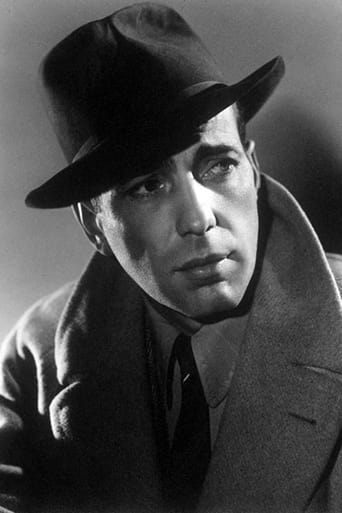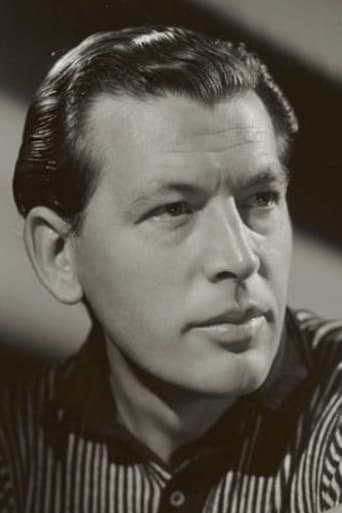Diagonaldi
Very well executed
Senteur
As somebody who had not heard any of this before, it became a curious phenomenon to sit and watch a film and slowly have the realities begin to click into place.
Luecarou
What begins as a feel-good-human-interest story turns into a mystery, then a tragedy, and ultimately an outrage.
filippaberry84
I think this is a new genre that they're all sort of working their way through it and haven't got all the kinks worked out yet but it's a genre that works for me.
Charles Herold (cherold)
This isn't a very good movie, but James Wong Howe's brilliant cinematography makes it look like one. This is the sort of movie worth watching just to see how spectacular Howe was.Outside of that, it's a little dull. The flashback within a flashback within an etc. doesn't work that well, mainly because the movie fails to make any of its threads or characters all that interesting. Designed as war propaganda, the movie is often ostentatiously obvious, most notably in the rah-rah score and in things like the little French boy screaming Viva le France! Much of this was probably very stirring at the time, but it doesn't age well.The film also has a lot of typical Hollywood nonsense, like the way a movie in which everyone is French has major characters speak English while minor characters speak French and accents are whatever the actors walked in with. It's not that unusual for the time but I found it distracting. It might have been better if everyone spoke French, since the dialogue is often wretched (although, as with the characters, it is stylistically inconsistent, shifting from straightforward conversation to ornate, flower speeches).I do like this movie better than the first time I saw it when I was in college (in the 1980s), though I still don't like it much. But my god, what cinematography!
kapelusznik18
***SPOILERS*** Clumsy follow-up to the award winning "Casablanca" with Humphrey Bogart as crusading French newspaper editor Jean Matrac who finds himself framed for a murder that he didn't, but what pro Munich sell out Frenchmen did, commit and sent to Devil's Island to spend the next, if he survives, 15 years in that living hell. It's then in the spring of 1940 with the news of France in a life and death struggle with Nazi Germany that Jean with some half dozen French inmate patriots makes their escape to join in the fight against fascism on a row boat that's to take them 3,000 miles across the Atlantic Ocean to fight on the Western Front.It's on their way to France that Jean and his fellow escapees learn that their beloved France lost the war to Germany and decide to turn north to England against the ship's captain, who's following orders from the Vichy Government, being dead set against it. This leads to a mutiny on the ship with Jean leading the way together with the super patriotic French mess or cabin boy Billy Roy, who gets killed in the fighting, sounding the call "Vive La French" the only words he ever utters at every given opportunity. This is all told in flashback by Free French air-force Captain Freycinet, Claude "Don't rain on my parade" Rains, to Ameriocan war correspondent Manning,John Loder, as Jean now a highly decorated a tail gunner in Capt. Freycient squadrons is about to come back from a bombing mission over Nazi occupied Europe.****SPOILERS**** Sadly enough Jane didn't quite make it back with him being killed in action in a dog fight with German fighter planes before Manning has a chance to interview him. Very confusing movie made in a number of flashbacks within flashbacks to what its trying to tell its audience. With its star Humphrey Bogart looking bored-As well as trying to keep a straight face- as hell and barley awake in him trying to be convincing in his role. About the only time that Bogart did his best acting was at the very end of the movie when he was dead and knew that this horror, in the role that he was forced to play, was about to finally come to an end.
moatazmohsen78
This film was a great document for the resistance of France during Nazi occupation in France during WWII in 1940 and the courage of Charles Degaulle after his refuse for the decision of general Philip Bataan the president of Vichi french government under occupation in 1940 and he went to England at the time of Primier Churchill that he supported Degaulle in his resistance to give France her liberty under (Le Croix Lorinne) the cross of (Joan of Arc) during her resistance against English occupation in France in 15th century.Degaulle used this cross in the french flag of the (French Free government) that was presented by him in england and after this way that was transported in Tchad and Algeria to make a collection for the different departments of French army to make the french Independence by their shoulders.That,s the end of final massage at the end of this film that Boggy sent with his corpse a massage for his son to complete with his friends and partners the french dream of making liberty to France under the spiritual leading by Degaulle the (Taste of freedom) after that in 1944 that made a liberty of France by french shoulders by the allies of England , U.S.A , soviet union but the under french responsibility in (Normandi) to be French forever.
dglink
A year after the studio's success with "Casablanca," Warner Brothers evidently thought that lightening would strike twice with the same formula. Thus, producer Hal B. Wallis reunited the same director, Michael Curtiz, and many of the same actors, Humphrey Bogart, Claude Rains, Sidney Greenstreet, Peter Lorre, Helmut Dantine, and even the cabaret singer, Corinna Mura, from the prior-year's Oscar winner. The studio then hired Michele Morgan, who, like Ingrid Bergman, was a European actress with an accent, and the soundtrack was peppered with the stirring French national anthem, "La Marseilles," that had been used so effectively in the 1943 classic. Even the name of another exotic city was inserted in the title. The pot was stirred with a script based on a Nordoff and Hall novel, and the result was "Passage to Marseille." While "Passage to Marseille" is often an entertaining film, the 1944 movie is no "Casablanca." Although much has been made of its complex nest of flashbacks within flashbacks, the structure is not difficult to follow, especially for modern audiences accustomed to movies that utilize fractured time or stories that are told in reverse. While Bogart and Morgan also have Paris, the relationship between Jean and Paula does not resonate like that between Rick and Ilsa. The romance between the couple has less screen time than that in "Casablanca," and the third party in the triangle is not Paul Henreid, but rather Bogart's crusading patriotism. Instead of an unforgettable romance, most of "Marseille" takes place among men on the high seas or in a tropical prison camp, and the plot provides enough action to sustain interest throughout. However, like the success that "Mrs. Miniver" had in raising awareness of the British struggle against the Germans, Warner Brothers attempted herein to boost the profile of the French resistance with the American movie-going public. Thus, "Marseille" focuses on the patriotism of the French, and the desire of Frenchmen everywhere to liberate their homeland from the Nazis. The credibility may have been stretched a bit, however, because, after the cruel and unjust treatment that Bogart and his fellow prisoners suffer at the hands of French authorities, their desire to fight for France is difficult to comprehend.However, despite credibility problems, a flawed and contradictory central character in Jean Matrac, and a structure that reportedly is difficult for some to follow, "Passage to Marseille" is solid entertainment in the World War II morale-booster genre. Of course any film with Bogart, Rains, Lorre, and Greenstreet is worth seeing, but one that has also been expertly helmed by Michael Curtiz, strikingly photographed by James Wong Howe, and scored by Max Steiner has to be several cuts above other movies from the period. If not quite "Casablanca," "Passage to Marseille" is still solid entertainment.





